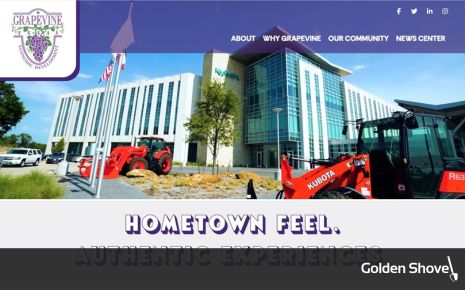Successfully Measuring Marketing ROI in Tourism

13 May 2024
News, Tourism, Marketing
Proving the effectiveness of marketing efforts is crucial for tourism professionals. As you navigate varying consumer behaviors and competitive destinations, demonstrating the value of marketing return on investment (ROI) provides the necessary clarity and justification for promotional expenditures in tourism.
Measuring Marketing Success: Tools and Metrics
Website Analytics
Websites serve as digital storefronts for tourism destinations, making website analytics a valuable tool for measuring marketing effectiveness. Platforms like Google Analytics provide insights into website traffic, user behavior, and conversion rates. Metrics such as unique visitors, bounce rates, and conversion funnels are essential for tourism professionals to evaluate the performance of their online marketing efforts. Research shows that improving website speed can significantly boost traffic and conversion rates on a website. Additionally, effective website design, including responsive web design and mobile optimization, plays a pivotal role in maximizing user engagement and conversion rates.
Social Media Metrics
Social media platforms offer a wealth of data that can be leveraged to measure marketing success. Metrics such as engagement rate, reach, and conversion rate allow tourism professionals to gauge the effectiveness of their social media campaigns. Additionally, tools like Facebook Insights and Twitter Analytics provide detailed analytics on audience demographics and behavior, enabling targeted marketing strategies. According to HubSpot, Facebook and Instagram are the leading platforms for achieving the highest return on investment, as recognized by 29% of marketers.
Email Marketing Analytics
Email marketing remains a powerful tool for reaching potential visitors and driving engagement. Metrics such as open rate, click-through rate, and conversion rate provide valuable insights into the effectiveness of email campaigns. A study by Backlinko highlights the significant impact of including videos in emails, noting that this can boost click-through rates by 65%. Additionally, welcome emails are particularly effective, with an average click-through rate that is 3.7 times higher than that of regular newsletters. By strategically incorporating simple things like this, tourism professionals can greatly enhance engagement and conversion rates. These insights allow for the optimization of email content and timing, maximizing both engagement and overall marketing ROI.
Advanced Analytics and AI in Marketing
Artificial intelligence (AI) and advanced analytics are transforming how tourism professionals understand and predict visitor behavior. Tools like predictive analytics can forecast future travel trends, while machine learning algorithms optimize marketing campaigns by personalizing offers based on data. For example, AI can analyze past booking patterns to tailor promotions, enhancing both customer satisfaction and conversion rates. By integrating AI-driven insights into marketing strategies, tourism professionals can achieve a higher ROI by delivering the right message to the right person at the right time.
Competitive Benchmarking in Tourism Marketing
Competitive benchmarking is an essential practice in tourism marketing, allowing organizations to gauge their performance against peers and adapt strategies accordingly. According to Databox, companies effectively employ competitive benchmarking by aligning it with specific brand goals such as customer loyalty or brand awareness. They then compare relevant metrics like social media engagement or website traffic with those of their competitors. This targeted approach ensures that benchmarks are not only meaningful but also actionable, providing clear insights that can directly influence marketing strategies and enhance ROI.
Leveraging Customer Feedback and Market Research
Understanding customer feedback and market research is also essential for measuring the ROI of your marketing efforts. Surveys, feedback forms, online reviews, and focus groups provide direct insights into what tourists appreciate and what areas require improvement. By quantifying this feedback, tourism professionals can link changes directly to specific marketing initiatives. This approach not only helps in refining marketing strategies but also demonstrates a clear linkage between marketing activities and enhanced customer experiences, thus supporting more informed decisions on marketing spend.
Communicating Values and Benefits to Stakeholders
Transparent Reporting
Building transparency and trust through reporting is essential for effectively communicating marketing success to stakeholders. Providing clear and comprehensive reports that highlight key metrics, trends, and insights demonstrates accountability and fosters confidence in marketing initiatives. Incorporating visual aids such as charts and graphs can enhance stakeholders’ understanding of complex data, making the information more accessible and easier to retain. Forbes gives further support by identifying ways to be more effective at transparency with your stakeholders. These include cutting down on the fluff, giving all the details you can, being honest about shortcomings, setting a plan for growth, and connecting your transparency to your values.
Showcase Impact
Beyond quantitative metrics, it's important to showcase the qualitative impact of marketing efforts on the community and economy. Case studies and success stories highlighting the tangible benefits of tourism marketing, such as job creation, revenue generation, and community development, can resonate with stakeholders. This approach not only underscores the value of marketing initiatives but can also lead to increased support and investment from stakeholders.
Stakeholder Engagement
Actively engaging stakeholders in the measurement and reporting process fosters collaboration and buy-in. By soliciting feedback and input from key stakeholders, tourism professionals can ensure that reporting efforts align with stakeholder priorities and concerns. Additionally, involving stakeholders in setting goals and objectives for marketing campaigns increases their investment in the success of those initiatives.
McKinsey & Company highlights that successful stakeholder engagement hinges on identifying influential stakeholders (voice) and those pivotal to the organization’s performance (value). By focusing on these key groups, organizations can tailor their engagement strategies to be more effective, ensuring that change initiatives are supported by those who can most impact their success. This approach not only increases the likelihood of successful transformations but also aligns closely with the principles of transparent communication and active stakeholder involvement.
More Topics

Blossoming Beyond Borders: Skagit Valley Tulip Festival and the Economic Growth of Skagit County
May 8 2024




